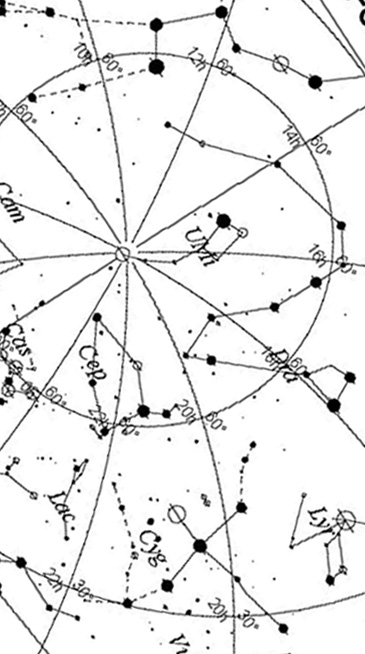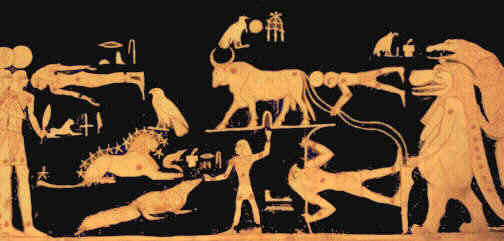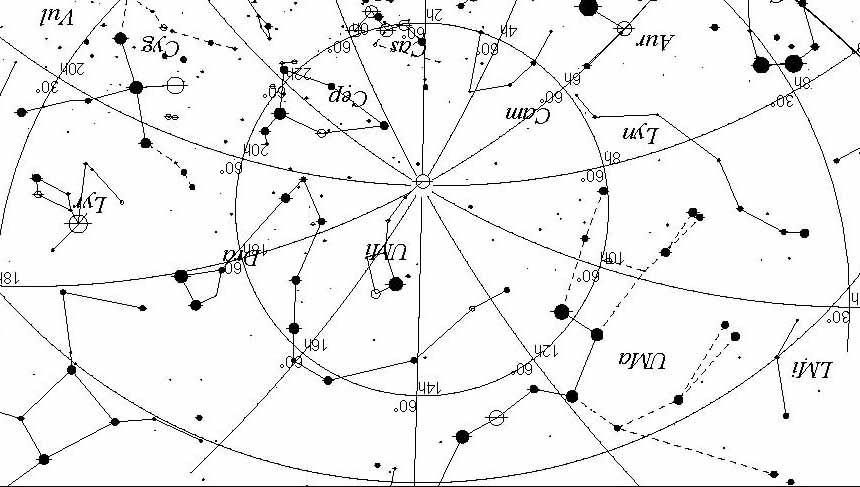![]()
![]()
The Mystery of Dwn-'nwy and its Identification and Role in Ancient Egyptian Astronomy
A Response to Robert Bauval from Andrew Collins, dated 05.04.07.
For me, the biggest fight regarding the significance of Cygnus in the Pyramid Age is providing compelling evidence that the falcon-headed god Dwn-'nwy (pronounced du-n-wae, dunnie or something like it) is Cygnus. Yes, we have the published theories of individuals such as British Egyptologist Gerald Wainwright (1932), Czech astronomer Zbynek Zába (1953), Italian metrologist and science historian Livio Stecchini (online publication), and French Egyptologist Jean-Philippe Lauer (1960), who all identify Dwn-'nwy as Cygnus. Plus we have the additional evidence I have deduced from a careful examination of the zodiacs at the Dendera temple (see below), but I sense there is so much more to be explored here.
The biggest and most obvious puzzle to modern archaeoastronomers is Dwn-'nwy's placement in the scheme of sky figures we know as the northern group of constellations, which appear on astronomical panels, either in coffins or on tomb ceilings, from the New Kingdom onwards. Robert has stated in his many postings on the Graham Hancock message board (GHMB) that Dwn-'nwy appears out of spatial context with its neighbours - Mšhtyw, the bull/ox thigh (Ursa Major) and the hippo (Draco), often shown with a croc on its back. Moreover, Ursa Major and Dwn-'nwy are depicted so close together that it rules out Cygnus being the intended constellation for the latter. I would like now to re-establish Dwn-'nwy's role and identification in ancient Egyptian astronomy, and answer all queries posed by Mr Bauval in recent months.
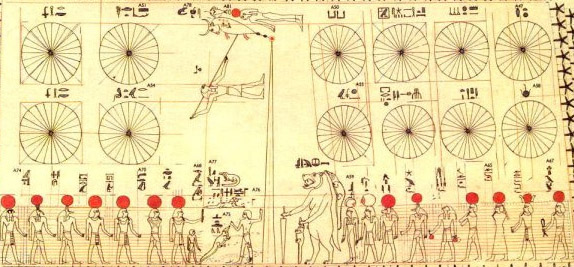
The astronomical
ceiling in the tomb of Senmut. Dwn-'nwy spears Mšhtyw seen here
as a floating balloon-like head and torso of a bull. The hippo is
at the base of
a vertical device known as the Mooring Post.
Meridian
Line
What we do know is that Mšhtyw, the ox bull/ox thigh, and the
falcon-headed figure Dwn-'nwy, who features as a celestial deity in
the Pyramid Texts, share a dual partnership by virtue of being linked
by a linear device shown generally as a cord, pole or spear. It is
held in both hands by Dwn-'nwy and very often connects with Mšhtyw
- shown variously as an ox thigh, bull's head and torso, or complete
bovine - either as an animal lead (i.e. the cord) or as a point of
contact (the pole or spear). Early pioneers in the field of ancient
Egyptian astronomy identified this linear device as the imaginary
meridian, which divides the sky into two halves, east and west of
the north-south line, from one horizon to the other. In ancient times
this meridian was used by astronomer priests worldwide to track the
passage of the celestial bodies, but in cosmological symbolism it
was seen as the umbilical cord linking this world to the sky-world,
via a cosmic navel or womb, synonymous with the north celestial pole.
This, along with the dark region that it occupied, where only the
midnight sun passed, was generally seen as a gateway or entrance to
the sky-world, along with another route reached via the Milky Way.
It was towards this northerly extending meridian line that the greater
majority of ancient Egyptian tombs, mastabas and pyramids were directed
through from the Predynastic period through until the end of the Old
Kingdom, c. 2170 BC, a supposition supported by textual references
in the Pyramid Texts (see Faulkner, 1966).
Stretching
of the Cord
Thus the cord or line between Dwn-'nwy and Mšhtyw, the ox thigh
constellation, is attempting to express the celestial relationship
between these two sky figures. Thus it becomes crucial in attempting
to understand Dwn-'nwy in ancient Egyptian astronomy, since he appears
to control the cord, pole or spear, a device most probably synonymous
with the cord or rope used in the ancient Egyptian ceremony known
as the Stretching of the Cord. This was conducted at the foundation
of a new building, temple or royal tomb in order to symbolically align
it true north, i.e. towards the meridian line. It involved the participation
of the king, as the living embodiment of 'maat', a principle relating
to cosmic order and harmony. He would work to this end in unison with
the goddess Sheshat, the consort of Thoth, who presided over the concept
of divine measurement; her role being taken by a presiding priestess.
Thus if the cord between Mšhtyw, the bull/ox thigh constellation, and the falcon-headed Dwn-nwy is the divine form of the cord used in the Stretching of the Cord ceremony, then it strongly suggests that these two constellations were involved in determining the whereabouts of the northerly extent of the meridian. This would have been both for practical reasons and also to create a visual means of access to the northerly placed cosmic navel, to which funerary monuments were generally aligned.
It should be pointed out that the dual relationship between Mšhtyw, the ox thigh, and Dwn-'nwy goes back at least to the Eleventh Dynasty, c. 2134-1991 BC, for they are found together on the coffin of an individual named Heny (as was noted by Wainwright, 1932). This implies that these two constellations featured in funerary practices, perhaps in connection with the soul's journey to the afterlife, even by this age.
As to the identity of these two ancient Egyptian sky figures, we know only for certain that the ox thigh constellation Mšhtyw was Ursa Major, which as the ox thigh resembles the arrangement of the seven major stars of Ursa Major in their role as the Plough or Big Dipper. Furthermore, the ox thigh is occasionally depicted with seven stars within its outline, positioned very much the same as those of Ursa Major when standing upright in the sky. Thus Dwn-'nwy has to be a second constellation that when aligned with the Plough or Big Dipper created a suitable meridian line on the northern horizon.
Transit
of the Meridian
Ursa Major was circumpolar during the Pyramid Age, and thus its key
stars could have been used for the purpose of achieving a vertical
line on the northern horizon as it crossed the meridian on either
its lower or upper transit, that it at its highest and lowest position
in the night sky. If this was achieved on its upper transit, then
the second constellation used, i.e. Dwn-'nwy, would also have to have
been circumpolar, since it would need to have made its lower meridian
transit at the same time.
If so, then Dwn-'nwy could not have been Cygnus, since this was not circumpolar as seen from Egypt during the Pyramid Age. However, the second constellation marking the meridian line need not have been circumpolar, for it could have crossed the meridian on its upper transit as Ursa Major was doing the same on its lower meridian transit. This would still have enabled astronomer priests the opportunity to use the chosen stars from both constellations as they crossed the meridian to signify an imaginary pathway - seen as a rope, ladder or cord - along which both initiates and the dead were able to reach the sky-world. Moreover, the alignment of stars could equally have been utilized in connection with the Stretching of the Cord ceremony, which we know from ancient Egyptian textual accounts involved lining up stars in Mšhtyw, the ox thigh constellation, i.e. Ursa Major. So how might we go on to identify Dwn-'nwy?
Ursa
Major and Cygnus
As the work of archaeologist Marion Popenoe-Hatch (1971), working
on Olmec astronomy c. 2000-1000 BC, and archaeoastronomer Thaddeus
M Cowan (1975) working on Hopewell astronomy in North America, c.
1000-1BC, have both independently concluded - Ursa Major's best sparring
partner in the night sky is Cygnus. Although not circumpolar, its
cross-like arrangement of stars cross the meridian on their upper
meridian transit just as Ursa Major makes its lower meridian transit.
Popenoe-Hatch found confirmation of the connection between these two constellations in alignments at the principal Olmec site of La Venta, which she herself excavated, as well as in Olmec statues and reliefs showing the so-called were-jaguar, suspected of representing both the shaman and the vault of heaven. Cowan, on the other hand, found evidence of the connection between Cygnus and Ursa Major in the strong relationship on the ground between effigy mounds shaped to represent birds and bears, the latter being a suspected Native American asterism representing the key stars of Ursa Major, a tradition almost certainly introduced to the American continent from Eurasia.
Both Popenoe-Hatch and Cowan both independently came to the conclusion that key stars in the constellations of Ursa Major and Cygnus were used to create a star clock around the north celestial pole, the turning point of the heavens. This system was formulated, Popenoe-Hatch concluded, by the Olmec c. 2000-1000 BC, and by the mound-building Hopewell people c. 1000-1BC, according to Cowan. It is not known how the Olmec might have represented the stars of Cygnus, other than through the use of a glyph, later adopted by the Maya, known as 'crossed bands', a device similar to the St Andrew's Cross used on the Scottish national flag. However, the Hopewell of the Mississippi basin would appear to have viewed the principal stars of Cygnus as a predator bird, most probably an eagle, even though a similar, contemporary bird effigy mound created by the Woodlands Indians in Georgia and thought to represent Cygnus is likely to be a representation of the turkey vulture.
Although both the Olmec and Hopewell cultures developed, apparently in isolation, on a continent far removed from the Egypt of North Africa, the relationship between the stars is universal and not restricted to specific longitudes. Although the height of the north celestial pole, and thus the circumpolar stars, varies according to latitude, the movement of the stars remain the same.
So there can be no good reason not to consider the possible relationship between Ursa Major and Cygnus in ancient Egyptian astronomy. Indeed, this is precisely what the likes of Wainwright, Zába, Stecchini and Lauer did in their own generations. They proposed that key stars (which ones varied according to each author) in Ursa Major and Cygnus were used in unison to create a meridian line both as a star clock and in order to determine, symbolically at least, true north (even though I do not believe that this process would ever have been accurate enough to align the Great Pyramid to within 3 arc minutes of true north. I have no idea how this might have been achieved).
Modern
Trends
Having identified Cygnus as Ursa Major's sparring partner in ancient
Egyptian astronomy, the likes of Wainwright, Zába, Stecchini
and Lauer all concluded that this is what was being shown in the relationship
between the ox thigh asterism and Dwn-'nwy in representations of the
northern sky group.
However, modern archaeoastronomers dismiss Wainwright's identification of Dwn-'nwy as Cygnus (see Neugebauer and Parker, EAT III, 1969, p. 183), as well as Zába's more specific proposal that Cygnus and Ursa Major were used by the ancient Egyptians to determine the meridian in order to align funerary monuments, including the Great Pyramid (see, for instance, Maravella, 2003). Stecchini and Lauer's own work, which expanded that of Zába, is more or less ignored. Instead, alternative opinions are explored on the exact science of ancient Egyptian astronomy, which has led to Dwn-'nwy being identified as stars belonging to a constellation much closer to Ursa Major, usually either lesser stars of Ursa Major or those of Ursa Minor. However, this trend stems in my opinion from the incapability of these scholars to accept that the artistic arrangement linking the ox thigh constellation together with the falcon-headed Dwn-'nwy shows not an exact relative position of the stars in question but a sparring partnership in a compound form. Indeed, if the correct spatial relationship between Ursa Major and Cygnus were to be accurately portrayed in a sky panel then it would mean extending it across an open gap of sky so that Cygnus might be included. I really do not believe that this was either necessary or attempted in the known representations of the northern group of constellations.
Mirroring
the Sky
In recent posts on the GHMB Robert Bauval has questioned Dwn-'nwy's
identity as Cygnus. He points out that it is shown out of context
with its neighbours - the hippo and Mšhtyw, the bull/ox thigh.
Usually, the hippo is shown on the right of the panel, with Dwn-'nwy
on its left and Mšhtyw overhead the falcon-headed god, the manner
it appears on astronomical ceilings such as those found in the tombs
of Senmut, Seti I, Rameses III, Rameses VI, etc.
In the sky Draco occupies a position between Cygnus and Ursa Major, implying to Bauval that Cygnus cannot be Dwn-'nwy. However, when you look more closely at these three asterisms and their placement together, we see that only a small group of stars in Draco fall on the line joining the central stars of Cygnus with those of the Plough or Bigger Dipper. The rest of the celestial dragon, including those of its head, are located on the right-hand side of this line. Since we have no idea exactly which stars in Draco were used to create the hippo, its relationship to the line joining Cygnus and Ursa Major is quite in accordance with the position of Dwn-'nwy and Mšhtyw on the ancient Egyptian sky-maps.
The only problem is that whereas Dwn-'nwy is almost always shown beneath Mšhtyw, when seen in context to the upright hippo, Cygnus is above Ursa Major in its relationship to Draco when used to determine the meridian line. As Bauval has pointed out, this might be seen as evidence against Dwn-'nwy being Cygnus. Furthermore, some fairly late astronomical panels preserved in royal tombs, such as those in the tombs of Rameses VII and Tausert, show the entire group of sky figures mirror fashion. This makes the hippo appear on the left-hand side of Dwn-'nwy and Mšhtyw (see Neugebauer and Parker, EAT III, 187), meaning that the three key sky figures under question do not now correspond with their proposed astronomical counterparts, respectively, Cygnus, Ursa Major and Draco.
|
A sky map showing the relationship between Cygnus (Cyg), Draco (Dra) and Ursa Major (UMa), at top. |
The relationship of the sky figures as seen on the ceiling of the tomb of Seti I, c. 1300 BC. Dwn-'nwy holds the cord, here bent at right angles so that the artist might pull Mšhtyw, here seen as a bovine, into the compact frame. Although not perfect, the relative positions of Dwn-'nwy and Mšhtyw in respect to the hippo correspond approximately to those of Cygnus, Ursa Major and Draco as seen in the accompany sky map (left). |
Yet which way around are the sky figures meant to be? Is it as they appear in the tombs of Senmut and Seti I, for instance, with the hippo on the right, or it is as they appear in Rameses VII and Tausert, with the hippo on the left? In 2002, within an on-line article entitled 'The Lion (Leo) was known in the New Kingdom - Part 4: Ancient Astronomical Drawings: The Common Prototype', Robert Bauval drew attention to the existence of the mirrored sky panels cited here, using them to demonstrate that a lion featured among the northern group is in fact the classical constelletion Leo, whom he identifies as Horemakhet, Horus-in-the-Horizon, the name applied to the Sphinx monument in the New Kingdom period (see http://www.robertbauval.co.uk/articles/articles/nkleo4.html). Moreover, Bauval proposes in the same article that this mirrored form of the sky figures is arguably the 'common prototype' of the north group, not those where the hippo is seen on the right-hand side of the register. Assuming that he is correct, Bauval uses these findings to demonstate that Dwn-'nwy is not Cygnus, since it is out of sequence with the other sky figures. However, to my knowledge, the mirroring of the sky figures only appears in tombs from the twelfth century BC, whereas various examples of the northern sky group with the hippo on the right-hand side exist without rivals prior to this time. Indeed, they begin with the oldest full register of sky figures which appears in the tomb of Senmut, c. 1475 BC. Thus the mirrored images in later tombs cannot be used to dismiss the idea that Dwn-'nwy is Cygnus, since this might merely be a reversed form of the sky panel's original prototype.
The
Dendera Zodiacs
A further criticism levelled against Dwn-'nwy being Cygnus by
Bauval is the manner it is portrayed in the rectangular zodiac at
Dendera - designated Dendera E. Here the sky figure appears on the
right of the register with the bull Mšhtyw on its left and the
hippo beyond that. Clearly this is not the manner in which the three
constellations of Cygnus, Ursa Major and Draco appear in the night
sky. However, the Dendera zodiac was created towards the end of the
First Century BC, when the wisdom of ancient Egypt was fast crumbling
under the Graeco-Roman influence of the Ptolemaic dynasty. Thus the
true relationship between these three constellations might easily
have been forgotten by this time.

Section
from Dendera's rectangular zodiac, showing Dwn-'nwy spearing Mšhtyw,
with the hippo on its other side. This is not the manner that the
three asterisms appear in the night sky, if the falcon-headed deity
is Cygnus. They are mirrored like some of the later sky panels showing
the northern group of constellations, although this was not their
original form in the earliest depictions of the group.
Despite this problem, Dwn-'nwy is placed with respect to the ecliptic or zodiacal circle between Capricorn and Sagittarius, the precise position of Cygnus in the night sky. The significance of this fact only becomes important when we look at Dendera's round zodiac - Dendera B - where the same place, this time immediately above Capricorn and Sagittarius, is occupied not by Dwn-'nwy, which is conspicuous by its absence, but by a male figure holding a pear-shaped mace. He stands immediately above a goose (as if it might be an avian totem), in opposition to Mšhtyw, depicted as the ox thigh. This occupies a position just beyond the zodiac's central region, where are to be found two distinct figures. One, positioned at the zodiac's centre point, and thus marking the area of the north celestial pole, is a walking jackal, which can be identified as Wapwawet (or Upuat), the 'Opener of the Ways'. His duty was to aid the other jackal-headed god Anubis in performing the Opening of the Mouth ceremony on the body of the deceased. The other central figure is the hippo as found in the northern sky group. In the knowledge that Mšhtyw is Ursa Major, and the hippo is Draco, then there can be little doubt that the walking jackal is Ursa Minor, a deduction in line with modern archaeoastronomical thinking (see Krupp, 1979).
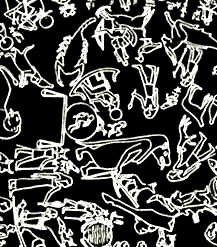 Section of the Dendera round zodiac showing the relationship of mace man (upside down) to the hippo (Draco), the walking jackal (Wapwawet) and Mšhtyw, the ox thigh. Mace man replaces Dwn-'nwy, who is noticeable by his absence. |
Sky map showing the positions of Cygnus (Cyg), Draco (Dra), Ursa Minor (UMi) and Ursa Major (UMa). They match up very well with mace man, the hippo, the walking jackal and ox thigh in Dendera round zodiac (left). Please excuse poor quality. |
Since mace man and his goose take up the position on the round zodiac normally occupied by Dwn-'nwy, identifying what constellation he represents is crucial, and there can be little doubt that he does stand in the proximity of where Cygnus is located in the night sky. It is an assumption that makes absolute sense when one realizes that the sky figures Mšhtyw, hippo, walking jackal and mace man correspond exactly to the relative positions of, respectively, Ursa Major, Draco, Ursa Minor and Cygnus, a conclusion drawn also by French astrophysicist and archaeoastronomer Éric Aubourg (1995), who has made a careful study of the Dendera round zodiac in the Louvre. This then is yet further evidence that Dwn'nwy is Cygnus, its absence from the round zodiac at Dendera and replacement by mace man (most likely a form of Geb, the earth god), stemming perhaps from the use of garbled ancient source maps to construct the different zodiacs present in the temple.
Conclusions
I acknowledge that modern trends in archaeoastronomical circles are
veering away from Dwn-'nwy being Cygnus, as has been ably pointed
out by Robert Bauval in his recent posts on the GHMB. Yet I believe
that this is due principally to a lack of insight into the true role
played by Mšhtyw and Dwn-'nwy in determining the meridian line,
as well as a series of misunderstandings regarding the compact nature
and distorted perspectives of the various astronomical sky panels
preserved today.
I personally have no doubt that Dwn-'nwy is Cygnus and that the falcon-headed god's relationship to Mšhtyw, the bull/ox thigh constellation, carries with it profound knowledge regarding the ancient Egyptians' belief in the use of the meridian line to reach a northerly placed sky-world, from which the soul was seen to originate and return in death. I also have no doubt that these same beliefs were present during the Pyramid Age and might indeed be reflected in the placement, orientation and visual appearance of the Giza Pyramids, whatever other religious influences - solar, lunar or steller - might have come to bear on their construction and design. It is a line of enquiry I am now pursuing as part of an ongoing research project in the wake of the publication last year of 'The Cygnus Mystery'.
Bibliography
Aubourg, Éric, 'La date de conception du zodiaque du temple d'Hathor à Dendera', BIFAOC 95 (1995), pp. 1-10.
Aveni, Anthony F, Archaeoastronomy in Pre-Columbian America, University of Texas Press, Austin, TX, 1975.
Collins, Andrew, The Cygnus Mystery, Watkins, London/New York, 2006/2007.
Cowan, Thaddeus M, 'Effigy Mounds and Stellar Representation: A Comparison of Old World and New World Alignment Schemes', in Aveni, pp. 217-34.
Faulkner, R O, 'The king and the Star-religion in the Pyramid Texts, JNES 25, 1966, pp. 153-161.
Hatch, Marion Popenoe, 'An Hypothesis on Olmec Astronomy, with Special Reference to the La Venta Site', pp. 1-38, reprinted from Contributions of the University of California Archaeological Research facility: Papers on Olmec and Maya Archaeology 13 (June 1971).
Krupp, E C, 'Astronomers, Pyramids, and Priests', in Krupp, In Search of Ancient Astronomers.
Krupp, E C, In Search of Ancient Astronomies, Chatto and Windus, London, 1979.
Lauer, J-P, 'Observations sur les pyramides', in BdE 30, 1960, pp. 99-124 and pl. 13.
Maravella, Amanda-Alice, 'The Stellar Horizon of Khufu: On Archaeoastronomy, Egyptology ... And some Imaginary Scenaria', AH17, 2003, 55-74.
Neugebauer, O, and Parker, Richard A., Egyptian Astronomical Texts (EAT) III, Brown University Press/Lund Humphries, Providence, Rhode Island/London, 1969.
Stecchini, Livio C, 'The Dimensions of the Great Pyramid', A History of Measures: II - Units of Length, www.metrum.org/measures/dimensions.htm.
Wainwright, G A, 'A Pair of Constellations', Studies Presented to F L Griffith, 1932a, pp. 373-83.
Zába, Zbynek, L'Orientatation Astronomique dans l'Ancienne Égypte, Archiv Orientální Supplementa II, Ceskoslovenská akademie, Prague, 1953.
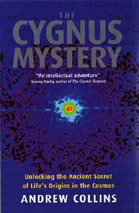
To order signed copies of THE CYGNUS MYSTERY, click here now.
![]()
![]()
